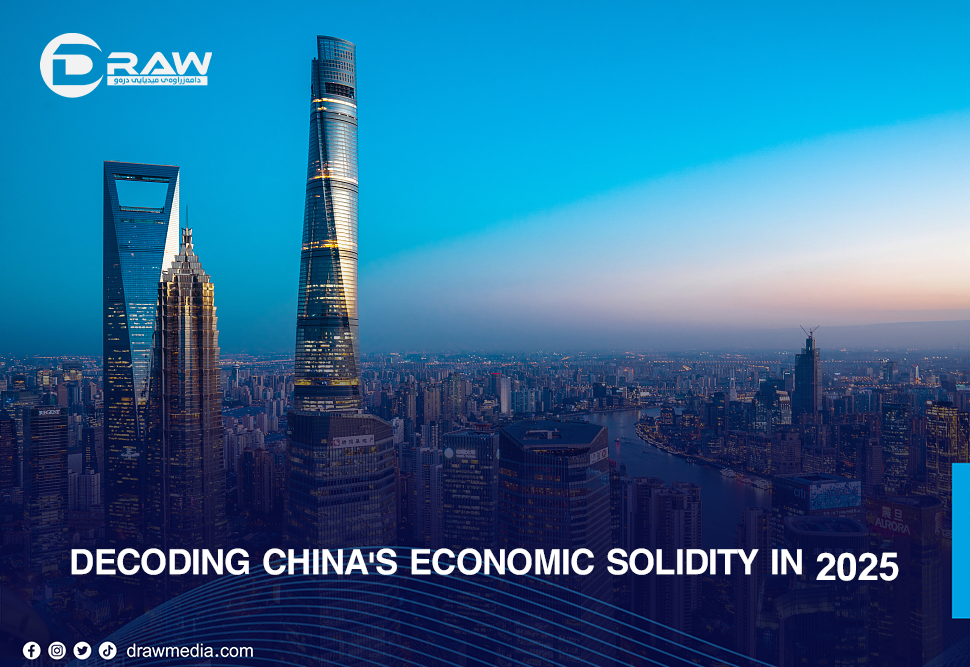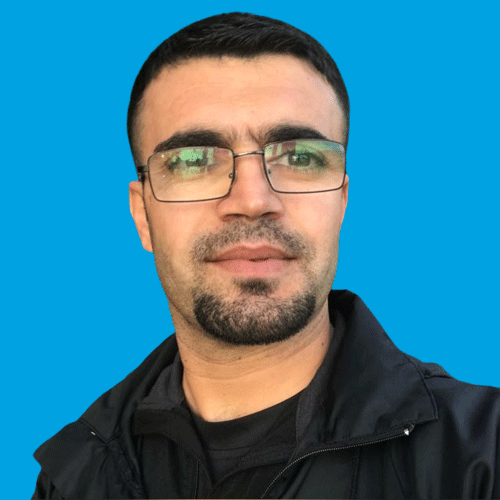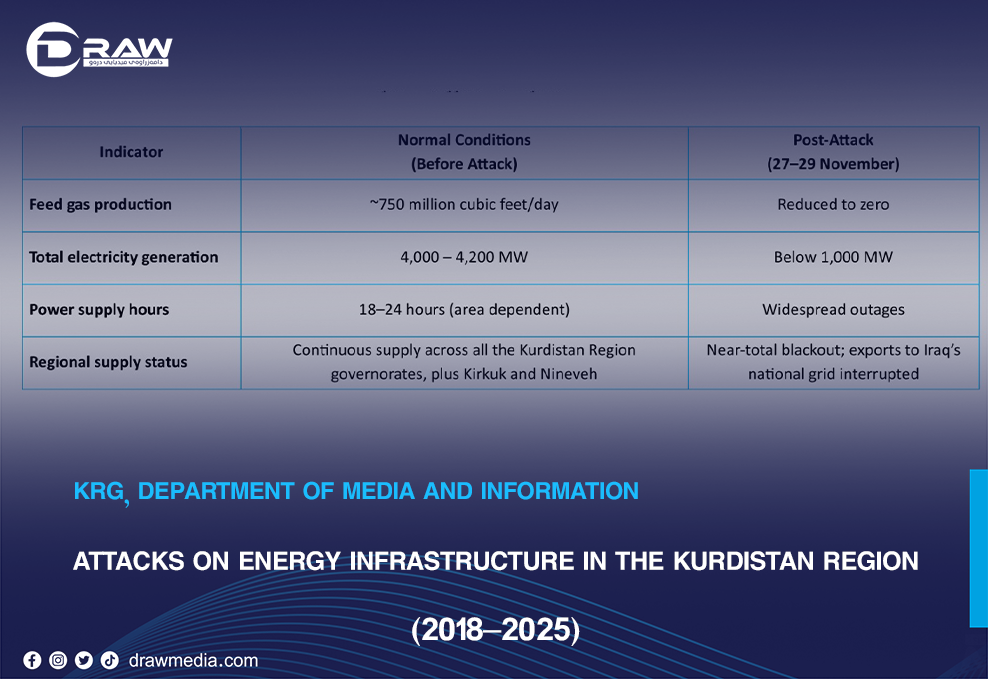The Islamic Republic Of Iran Will Collapse Only If Its Ethnic Minorities Are Supported
.jpg)
2022-11-12 20:02:25
Draw Media | MEMRI
Introduction
International media and most analysts observing Iran's protests have so far focused on the anti-theocratic sentiments and economic factors that drive mass grievances, leaving out the ethnic dimension.[1] However, understanding Iran's periphery and the grievances of its ethnic minorities is essential in explaining the recent revolution in Iran and the government's disproportionate use of force against ethnic minorities.
Iran's population is estimated at around 87,000,000, roughly half of whom are ethnic Persians that predominantly live in central Iran,[2] the rest being Kurds, Baluchis, Azeris, Arabs, Turkmen, Lurs, and Caspian ethnic groups. Although the successive regimes in Iran have succeeded in tackling ethnic uprisings, they lost the ideological and political war against minority ethno-nationalisms.
Since the foundation of modern Iran in 1925, there has been little support for the central government or its ideology and politics in the ethnic regions of the country.[3] The state has therefore viewed ethnic minorities and their political struggle for survival as an existential threat to its integrity. Nevertheless, through their growing opposition to the regime's minority policies and systematic discrimination, ethnic groups across Iran have become a crucial force turning minority politics and ethnic mobilization into an important space of resistance and movement for political change in the country.
Balochi Leader Calls For A Referendum On Self-Determination
Since the early 2000s there have been signs of rising ethno-nationalism and increased alienation among Iran's ethnic and religious minorities, to the extent that some high Iranian officials have issued warnings. For instance, in late 2004, the minister of intelligence, Ali Younesi, reported that the nature of future crises in Iran will not necessarily be political but rather ethnic and social.[4] The Islamic Majlis Center for Research, an Iranian government think tank, warned in a 2005 report that the country will face more serious internal unrest unless the government would better address the needs of its ethnic minorities.[5]
In recent years, Tehran has faced serious security challenges in its border provinces as the ethnic minorities – particularly Kurds, Ahwazi Arabs, and Balochis – have engaged in direct armed clashes with the regime. Last year, Iran's intelligence ministry stated that the regime destroyed 100 "terrorist groups" operating in the border regions in the southern, southeastern, and western parts of the country, which are inhabited predominantly by ethnic minorities.[6]
In response to the regime's brutal crackdown on Balochi people, Iran's top Sunni cleric and the de facto leader of the Balochi nation Molavi Abdolhamid recently called on Iranian authorities to hold a referendum on self-determination. On November 4, during a Friday prayers sermon in the city of Zahedan, the provincial capital of Sistan-Baluchestan province, Abdolhamid said: "Hold a referendum with international observers. Officials, listen to the cry of the people. People have been [protesting] in the streets for 50 days now; you cannot push them back by killing and imprisoning them, because they have seen blood and they have had their own killed. Hold a referendum and see what the people of Iran want, and with what kind of change they will be happy."[7]
Abdolhamid's call came after Brigadier General Ahmad Shafaei, an Islamic Revolutionary Guards Corps (IRGC) commander based in the Balochistan, said that Iran's enemies had targeted Zahedan as the first city to "fall" but that the elite force had foiled their efforts[8] – referring to the Zahedan protests and the ensuing massacre of at least 82 Baluchi protesters by the IRGC early last month.
The map shows that Balochistan, Kurdistan, and Khuzistan in particular have faced brutal repression by Iranian security forces in the past two months, compared to central Persian regions. (Source: En-hrana.org)
Map of Iran (Source: Goirantours.com)
Geopolitical Importance Of Iran's Ethnic Regions
Three factors have made Iran a key regional player: its geostrategic position, its extensive resources, and its human capital.
Geography plays a key role in Iran's desire to become a regional power, as it is located at a strategic intersection between the Middle East, Central Asia, the Caucasus and the Indian subcontinent, and borders the Caspian and Arabian Seas, and the Sea of Oman.
Through its border provinces, the regime accesses the outside world and its proxies and "colonies" (i.e., Iraq, Lebanon, Syria, and Gaza). Therefore, Iran's domestic and foreign policies strongly impacts the ethnic groups in the border regions. Given that ethnic minorities share strong cultural ties with coethnics in neighboring states, their press for greater self-determination and political autonomy could potentially lead to a unification with their kin. The role of "kin states" in supporting their coethnics morally and materially across the border is therefore of great importance.
Baluchistan lies at the mouth of the Strait of Hormuz, which is the world's most important oil chokepoint because of the large volumes of oil that flow through it. The area has enormous potential to emerge as a regional hub, and has become a key part of China's Belt and Road Initiative (BRI).
Given Iran's geographic location between the Arabian Peninsula, Central Asia, and South Asia, engaging it within the Belt and Road Initiative framework is essential to the realization of the BRI trade route for China. Particularly the Southern Corridor of the BRI, which will cross Central Asia, Iran, Turkey, and the Balkans. Hence, the ultimate success of the BRI depends to a large extent on Iranian participation and support.[9] Iran's importance in turn depends largely on the border regions' security and the political challenges they pose.
Since the mid-2000s, following a series of violent clashes between the regime and the ethnic groups, Iran's military and political elites have identified a "hybrid war" scenario that would threaten the regime's survival in the future, in which widespread national protests may coincide with an external military attack.[10] In order to tackle this, since the early 2010s, Iran has been changing its defensive/deterrent doctrine, adding an offensive dimension by adopting "hybrid warfare." Dubbed "forward defense" doctrine, it implies that Iran should fight its opponents outside its borders to prevent conflict inside Iran.[11]
In July 2022, Chief of Staff of the Iranian Armed Forces Major General Mohammad Hossein Baqeri warned against a tough and complicated "hybrid warfare" that the enemies have waged against the Islamic Republic. Therefore, he stressed "the necessity for constant improvement of Iran's deterrent power," in order to encounter external "military threats" and internal "security threats" at the same time.[12]
In fact, Iran's military doctrine of "forward defense" – engaging enemies outside of Iran – demonstrates its vulnerability at home for Iran worries about losing its strategic "hybrid warfare," when engaged internally if an anti-regime revolution breaks out across the country. The Iranian society and ethnic conglomerate are very fragile and prone to collapse under a more or less foreign interference combined with internal unrest.
Iran's main energy routes (Source: World Energy Atlas)
Human Capital
Since Iran is an authoritarian regime and pursues a military expansionist policy abroad, Tehran desperately needs the human capital of the ethnic minorities that constitute half of its population. Iran's large population has given it the largest pool of military age manpower of any state in the Persian Gulf, but the ethnic divisions within this population present a number of serious political, security, and economic challenges.
The Constitution of the Islamic Republic of Iran requires all men over 18 must to serve in the Armed Forces of Iran. At least half of Iran's regular armed forces are thus composed of troops conscripted from ethnic minorities. However, Persians comprise almost 80% of the senior officers due to the army's distrust of ethnic minorities.[13]
Furthermore, soldiers are not allowed to serve in their ethnic regions. This is to ensure that the military will not play a divisive role if ethnic tension in Iran increases. However, a major ethnic conflict can lead to defections among armed forces and negatively impact the effectiveness and morale of the Iranian army. This would be similar to the 1979 protests, when the revolution gained momentum and fighting broke out within some army units between those loyal to the Shah and the supporters of Khomeini. This situation weakened the internal bonds of the military, as many troops refused to follow orders and many conscripts deserted.[14]
Iran's current military capabilities are thus heavily influenced by its demographics. Iran is by far the most populous Gulf state, giving it a major potential advantage in building up its military forces. At the same time, this manpower base has deep ethnic divisions, and Iran's ability to manipulate and transform it into military power in its service has so far been successful. Yet, it could also play a sabotaging role in an ethnic conflict.
Iran's ethnic minorities form the majority of the working class. It is worth noting that Iran has particularly been successful in utilizing Azeris in its nation building. Many of them are well integrated into Persian society and therefore present in all different socioeconomic and politic strata (e.g., the Supreme Leader Ali Khamenei is of Azeri descent).
As Iran is undergoing significant political unrest, manpower shortages caused by the disintegration of the country will have a serious effect on its economy and military strength. The loss of its territory will simultaneously lead to the loss of its ethnic minorities' human capital, including almost half of its military personnel.
Natural Capital
Iran's national wealth comes from its natural resources mostly concentrated in the border regions, which has turned the Islamic Republic of Iran into an economic giant and a strong military power in the Middle East.
Khuzestan province – called Iran's "Achilles' heel" – which is predominantly inhabited by Arabs, is Iran's energy capital as it produces on average over 80% of the Iran's oil production and the bulk of its natural gas production.[15] Despite the amount of revenue generated by the province, Khuzestan suffers from extreme poverty, high unemployment, a lack of water and electricity, and growing health-related issues.[16]
Iranian Azerbaijan has the largest concentration of industry and trade outside of Tehran. Natural gas reserves in the Chalous gas field in the Caspian Sea of northern Iran, which is inhabited by Gilakis and Mazanderanis, could potentially meet almost 50 percent of all European demand for gas for 20 years. The deal Iran has made with Russian and Chinese companies to invest in the field with a 20-year profit share would also give Iran a high level of Russian and Chinese political support internationally.[17]
Iranian Kurdistan (called East Kurdistan or Rojhelat by the Kurds) possesses a large variety of mineral reserves estimated to be around eight billion tons, oil reserves and massive surface and underground water resources. The region contains almost 70% of Iran's proven gold reserves, estimated at 340 metric tons. Kurdistan has for decades supplied the economic, agricultural, and industrial sectors in Iran, mainly benefiting the development of the central parts of the country and bringing significant income to the state. This has occurred while the Kurdish region remains among the most economically underdeveloped and deprived areas of Iran.[18] Furthermore, some 15% of Iran's gas reserves are located in Kurdistan's Ilam province. Ilam Gas Refinery is the main gas supplier to Iraq, which Iran has utilized as yet another political weapon to bring Iraq under its control economically and politically. [19]
Sistan and Baluchistan, called the "mineral rainbow" of Iran, is where there are some of the most economic mines with reserves of antimony, titanium, copper, and gold. Fanuj city is estimated to sit on 3.6 billion tons of titanium reserves, the strategic metal of the century. The copper reserves in the province are expected to reach 400 million tons.[20]
Areas falling within the provinces of Khuzestan, the Caspian regions, and Kurdistan possess most of the Iran's surface and underground water resources. As the country faces intensified climate change challenges, including severe droughts, the Iranian government has aimed at overcoming water-related crises in the country's central regions by building dams and water-diversion projects in the peripheral regions of Khuzistan and Kurdistan. Therefore, despite such as an abundance of water, the two regions due to the transformation of their water to Persian regions are suffering from a massive water shortage.[21]
The control of such resources has thus never been in the hands of the ethnic minorities, and has instead been controlled by the central authorities and utilized to develop the central regions of Iran and strengthen Iran's military power to fuel its regional military expansionism. Therefore, despite being home to the bulk of Iran's natural wealth, the rate of deprivation, poverty, and unemployment is very high in the border regions. This uneven distribution of resources has created long-standing grievances and played a significant role in fueling ethnic group's desire for independence in the impoverished and underdeveloped periphery.
The chair of the Association of Khuzestani Arabs located in Tehran (Beyt Al-Arab, or Arab House), Hasan Abbasian, emphasized: "Most Arab people of Khuzestan sleep with empty stomachs on a sea of oil. In the summers they have to drink salty and bitter water because, during the shah's oppression, part of Karun's water was channeled to Isfahan and after the Revolution, some parts of Karun's water was channeled to Yazd, and recently to Kerman, and based on a new decision, the little remaining will be channeled to Qom in the future."[22]
The Iranian state's economic and developmental approach to natural resources and the mechanisms of extraction and exploitation of these resources in ethnic regions have resulted in extensive environmental destruction, affecting the public health and life expectancy. The ethnic regions have thus become internal "colonies" of the Iranian state, where the minorities and their natural resources are subject to state exploitation and destruction.
The Failure Of The Green Movement
The transition of the Green Movement from a group of angry voters to a mass movement demanding democratic rights remains a watershed moment in Iran's recent history. Its declining influence in the months following the election highlighted a number of drawbacks from which the movement suffered.
Kurdish scholar Ozum Yesiltas noted that although the inhuman crackdown by the government security forces played a major role in suppressing the protests, one significant deficiency of the movement was the lack of widespread support from Iran's ethnic minorities, including the Kurds, Balochis, Arabs, Turkmens, and others.[23] Unlike the 2022 protests, the 2009 protests remained largely limited to the northern areas of Tehran and a few more Persian cities. As the ethnic minorities make up almost half of Iran's population, their reluctance to figure significantly in the protests restricted the Green Movement's struggle for power and potential to become a nationwide movement. The reformist arguments for democratization and constitutional change, however, have largely left out appreciation and respect for ethnic and religious differences in the country.
It is worth noting that Iranian politicians, be they reformist or conservative, secularists or theocratic, refuse to recognize the multi-ethnic structure of Iranian society and the legitimate rights of the ethnic groups. As Iranian political scientist Mehrzad Boroujerdi has observed, "many of Iran's (ultra)nationalists worry that discussing the plight of ethnic minorities may open a Pandora's box and lead, even if indirectly, to Iran's eventual breakup."[24] Therefore, a regime change would be unlikely to alter the cultural and political status of ethnic and religious minorities unless the ethnic movements and the pro-democracy opposition collaborate and adopt "democratic confederalism" as their political agenda.
Conclusion: Toward A "Periphery Strategy" In Iran
In order to bring about regime change at home and contain Iranian expansionism abroad, Iran needs to be weakened from within. The international community therefore must engage Iran more effectively inside its borders through pursuing a "periphery strategy," i.e., supporting the ethnic minorities found in its border regions. This will achieve two goals. First, ethnic minorities would finally enjoy the freedom and human rights they have been deprived of since the early 20th century. Second, this would deprive Iran of human and natural resources it needs to perpetrate its malign expansionism in the Middle East.
An array of democratic ethno-nations in the periphery of Iran would create a "great wall" around the country. This "wall" would stretch from the Kurdish areas of Northern Khurasan to the Persian gulf in the west including Azerbaijan, Kurdistan and Khuzistan as well as Balochistan in the southeast and would limit Iran's access to the outside world and consequently end its geostrategic importance regionally and internationally.
*Himdad Mustafa is a Kurdish scholar and expert on Kurdish affairs.


.jpg)

.jpg)


.jpg)


